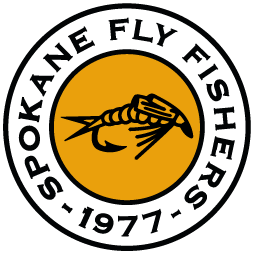Early Trout Like Worms. Really? Well, yes! And not only does the author dwell at length on this take-off on the old cliché regarding “the early bird…”, but he also describes fishing with “The Real Trout Bugs” and the advantages of using “Live Bait for Largemouths”. These and other chapters in Fishing with Ray Bergman reveal Bergman was a fishing generalist willing to use any successful, sporting angling method.
Ray Bergman is one of those fishing writers who developed an instructive, yet anecdotal style prominent in the middle of the last century. His JUST FISHING (1932), TROUT (1938, 1952), and FRESH WATER BASS (1942), were each considered landmark works in their day. Edited by Edward Janes, another of Outdoor Life’s Editors, Fishing with Ray Bergman (1970) is a compilation of many of the best columns and articles submitted by Bergman during his 26 years as Outdoor Life’s Fishing Editor. His tenure, from 1933 until 1959, spanned an era that saw great changes and advancements in tackle development. Rod construction during the period went from cane, to fiberglass. Fiberglass allowed the development of spinning, with it’s open-faced reels, as did the replacement of silk with nylon line. Improvements in fly line construction and nylon replacement of gut leaders greatly improved fly casting and presentation. Discussing these developments with the fishing public caused his columns, like those of the other authors of the day, to mix adventure with instruction. Such was necessary to guide the sporting public through the noted tackle advances. For example, in Tips for Early Trout he describes his own experience on an eastern stream roiled by spring runoff.
Using the ultra-light spinning gear that was in vogue, he had to experiment with slowing the normally quick retrieve provided by the new geared spinning reels. Slowing the crank retrieve sufficiently to allow the lures and bait to bounce the bottom, he was able to end the day with a respectable catch. Other chapters will cause the reader to reflect on his or her own early learning experiences. Ever hook a hellgrammite, caddis, or stonefly case (“periwinkles!”) to a bait hook? In the chapter entitled The Real Trout Bugs Bergman talks delightfully of his own experiences with such “bugs”, even after he had moved on to fishing with similar wet fly imitations when these same imitations didn’t work in high-water. He further recommends attaching the case itself to the hook (instead of uncasing the worm), because the case will better remain on the hook! Chapters such as Tricks You Ought to Know, Fish Like Small Lures, and Winter Tackle Care are all filled with similar, personal, instructive anecdotes.
Not that Bergman eschewed the fly. The chapter entitled The Right Fly Leader discusses the practical differences between the traditional silk gut and the new nylon, machine-tapered leaders that were beginning to replace them. In How to Fish with Streamers he reveals a real partiality toward those imitations. And, again, with all the wonderful, easy personal touches for which his style was so appreciated.
So, Really, how many of us, in our early angling lives, went straight to the fly rod? If, like most of us, you began by fishing with “garden hackle” and progressed through various other methods such as “hardware” (spinning with spoons), or maybe trolling with “pop gear” before your eventual arrival at
the fly shop, this volume will stimulate delightful reflection. It will also give insight into a time when, for much of the fishing public, so much was so new. All of which will help you appreciate today’s fly fishing so much more…
Fishing with Ray Bergman, as well as the above-mentioned TROUT, are available in your SFF Library.
